The Pazyryk rug, believed to be over 2500 years old, holds the distinction of being the world’s oldest surviving hand-knotted tufted pile carpet. Discovered in 1949 within the tomb of a Scythian nobleman in the Pazyryk Valley of the Altai Mountains in Siberia, this remarkable artifact has captured the attention of historians and carpet enthusiasts alike. In this article, we delve into the origins, craftsmanship, and intricate designs of the Pazyryk rug, shedding light on its disputed Armenian or Scythian heritage.
Exploring the Origins
The Pazyryk rug, dating back to the 5th Century BC, was found perfectly preserved within a tomb that had been encased in ice. Today, it resides in the renowned Hermitage Museum in St. Petersburg, Russia. While there is ongoing debate about its origin, with some attributing it to Armenian craftsmanship and others suggesting it was woven by the nomadic tribes of the steppes, its historical significance remains indisputable.
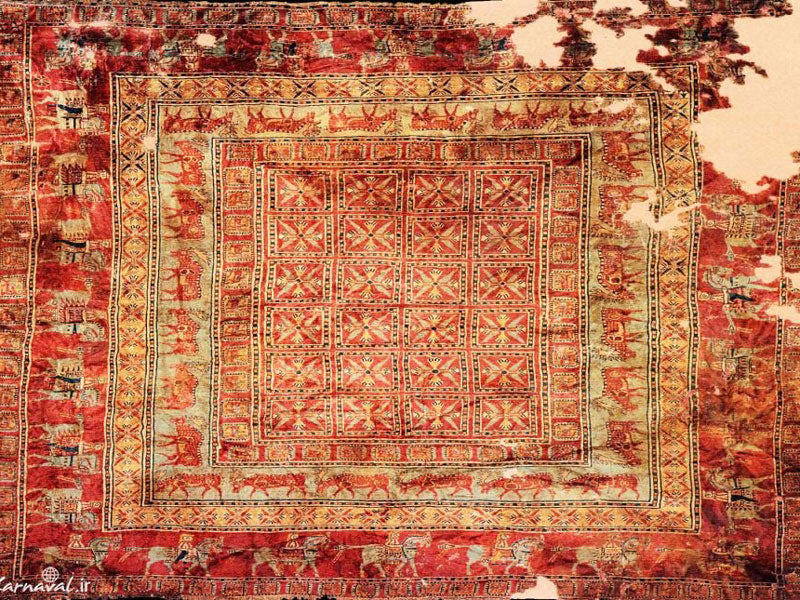
A Tapestry of Colors and Detail
Crafted using hand-carded and hand-spun wool, and dyed with natural vegetable dyes, the Pazyryk rug boasts breathtaking details and vibrant colors. The rug’s original brilliance, which must have been awe-inspiring when it was first created, can only be imagined due to the passage of time and the careful preservation efforts undertaken by the museum.
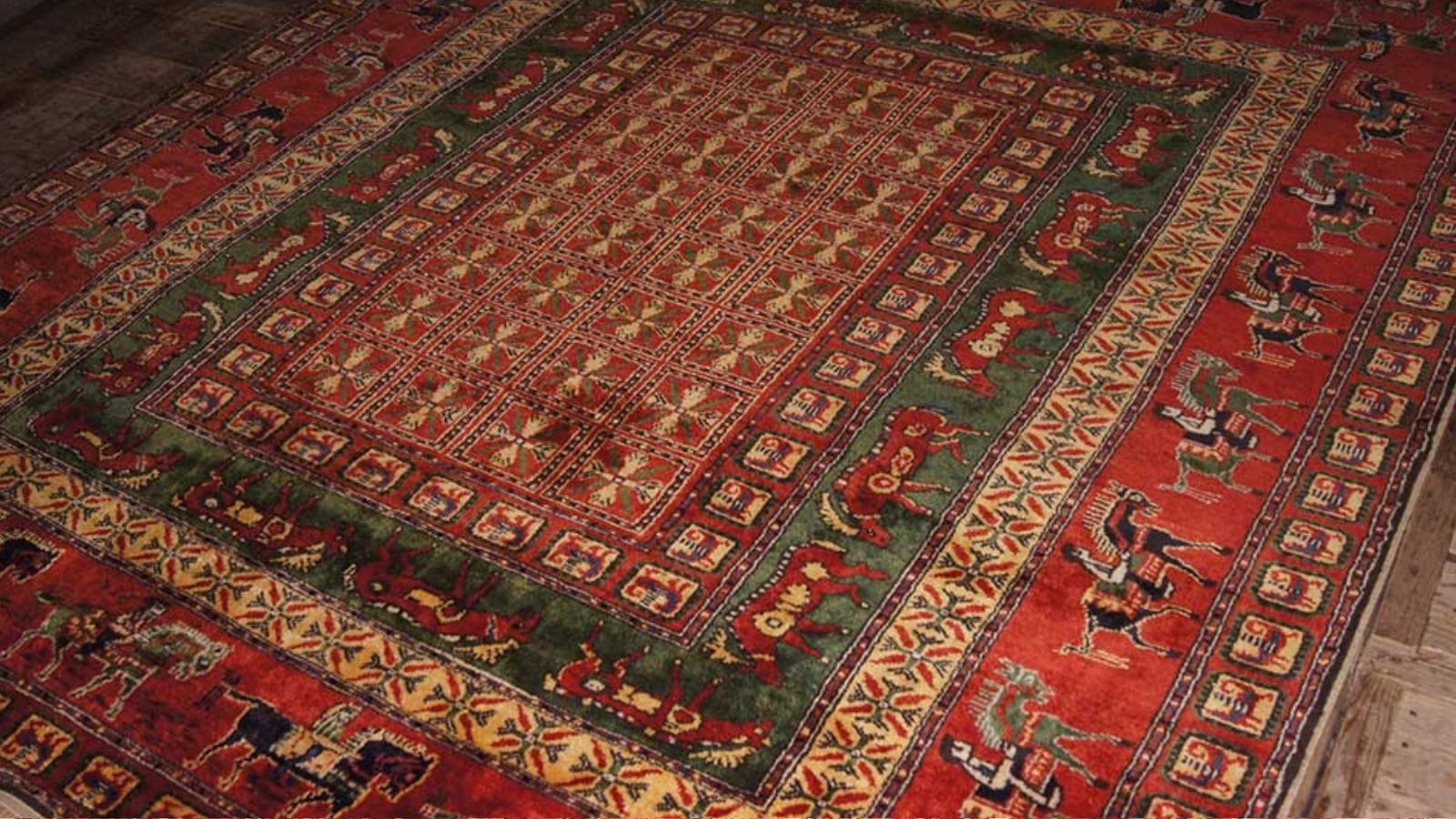
As observers, we can marvel at the red ground and the intricate 24 small squares adorned with a diagonal cross-shaped 4-stemmed flower design in gold, light and dark blue.
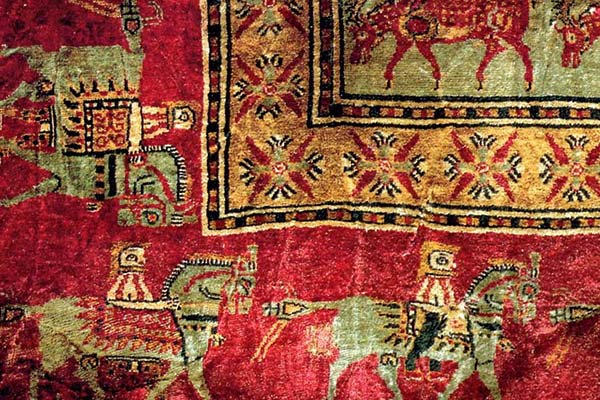
Intricate Borders and Mythical Imagery
The rug’s decorative bands are a testament to the skill and artistry of its creators. The first broad band showcases mythical Gryphons within a dark-blue jagged frame, while the subsequent band features red grazing stags against a blue-green background. Moving outward, we encounter a narrower band with cross-shaped squares on a yellow ground, adorned with sky-blue flowers and intricate red or dark-blue sepals and petal veins.
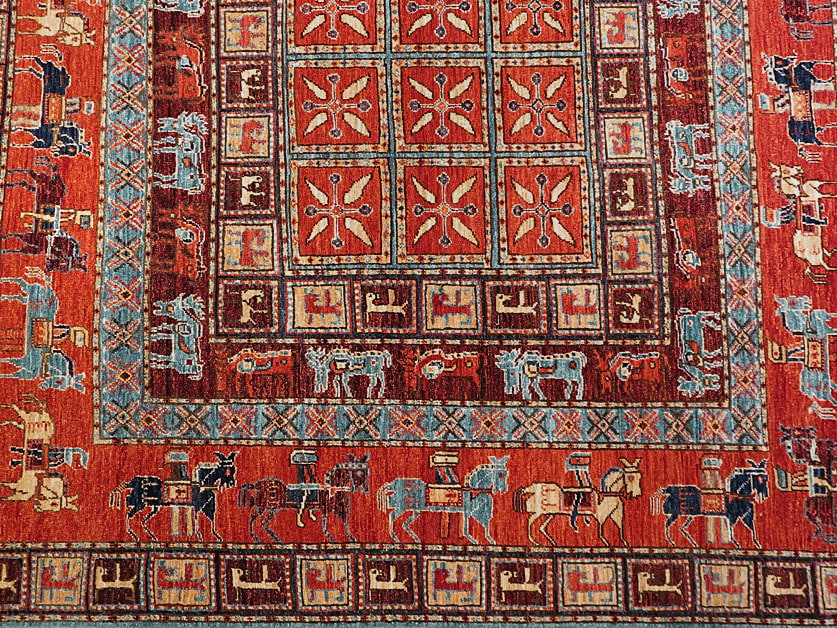
A Majestic Equestrian Display
The most captivating element of the Pazyryk rug is its widest border, which showcases 28 beautifully decorated horses and horsemen. These dynamic figures, depicted in a stylized manner, march or ride alongside their horses. The horsemen don gold-orange hood-shaped helmets with chin straps, while clad in knee-length, braid-trimmed coats in shades of white, red, and blue. The horses themselves exude strength and majesty, with plaited manes adorned with ribbons, feathers, and plaited, beribboned tails.
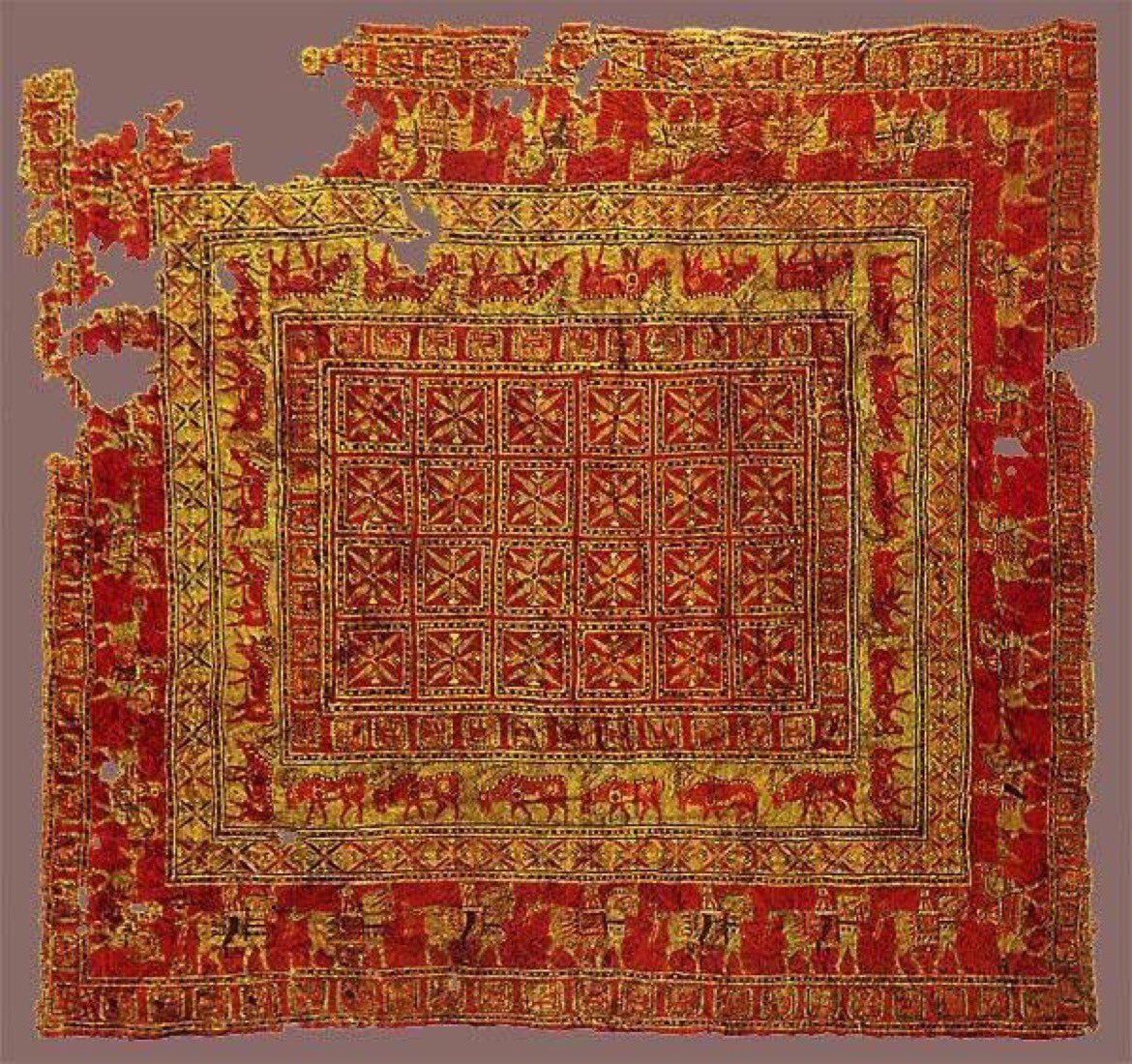
The Pazyryk rug stands as a testament to the ancient artistry and craftsmanship of a bygone era. Its discovery within a tomb frozen in time has allowed us to catch a glimpse of the remarkable skills possessed by the artisans of the Altai Mountains. While debates persist regarding its origin, the rug’s intricate designs and vibrant colors continue to captivate audiences worldwide. As we marvel at its complexity and beauty, we are reminded of the enduring power of art to transcend time and connect us with our ancient past.
